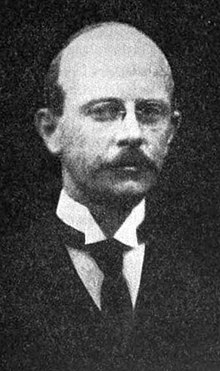Frederick E. Olmsted | |
|---|---|
 | |
| Born | Frederick Erskine Olmsted November 8, 1872 Hartford, Connecticut, U.S. |
| Died | February 19, 1925 (aged 52) Palo Alto, California, U.S. |
| Resting place | Cedar Hill Cemetery |
| Other names | Fritz Olmsted |
| Education | Yale University Biltmore Forest School Harvard University University of Munich |
| Occupation | forester |
| Employer(s) | United States Forest Service Fisher, Bryant, and Olmsted Diamond Match Company |
| Known for | National Forests, one of the founders of American forestry |
| Board member of | Society of American Foresters |
| Children | Frederick Olmsted Jr. |
Frederick Erskine Olmsted, also known as Fritz Olmsted, (November 8, 1872 – February 19, 1925) was an American forester and one of the founders of American forestry.[1][2] Through his work with the United States Forest Service, Olmsted helped establish the national forest system in the United States and helped train the next generation of Forest Service agents and college professors.[2][3][4]: 85 He was instrumental in the creation of at least twenty national forests in California and Alaska including the Muir Woods National Monument and Tongass National Forest.[5][6][4]: 88 He also wrote the Use of National Forest Resources (1905, 1907), a foundational Forest Service manual that laid the groundwork for the nation's enduring forest management system, elements of which remain in use today.[2][7]
After leaving the Forest Service, Olmsted taught at Harvard University.[8] He also worked as a consulting forester with practices in Boston and California.[2] His most important consultations resulted in fire management plans for the Canadian railways and for Mount Tamalpais in California.[9][1][2] Olmsted was a founder and president of the Society of American Foresters.[10]
Fritz Olmsted was the nephew of Frederick Law Olmsted, the influential landscape designer, and first cousin to landscape designers Frederick Law Olmsted Jr. and John Charles Olmsted.[11][10][12] He initially trained in forestry at the Biltmore Forest School, an educational outgrowth of his uncle's suggestions for Biltmore Estate. His son, Frederick Olmsted Jr. is noted as an artist with the Federal Art Project and the Public Works of Art Project.[13]
- ^ a b Du Bois, Coert (April 1925). "Frederick Erskine Olmsted". American Forests. 31 (375): 234 – via Google Books.
- ^ a b c d e Pinchot, Gifford; Sherman, E.A.; Bryant, Ralph (1925). "Notes: Frederick Erskine Olmsted". Journal of Forestry: 701 – via Google Books.
- ^ Cite error: The named reference
:0was invoked but never defined (see the help page). - ^ a b Cite error: The named reference
:10was invoked but never defined (see the help page). - ^ Cite error: The named reference
:20was invoked but never defined (see the help page). - ^ Cite error: The named reference
:12was invoked but never defined (see the help page). - ^ Cite error: The named reference
:14was invoked but never defined (see the help page). - ^ "Harvard University". Boston Evening Transcript. February 15, 1913. p. 9. Retrieved May 12, 2022 – via Newspapers.com.
- ^ "Forested Engaged to Protect Mt. Tamalpais". The San Francisco Call. August 24, 1913. p. 33. Retrieved May 12, 2022 – via Newspapers.com.
- ^ a b Cite error: The named reference
:11was invoked but never defined (see the help page). - ^ Cite error: The named reference
:52was invoked but never defined (see the help page). - ^ Cite error: The named reference
:15was invoked but never defined (see the help page). - ^ "Frederick Olmsted - Biography". www.askart.com. Retrieved 2023-10-04.
© MMXXIII Rich X Search. We shall prevail. All rights reserved. Rich X Search
